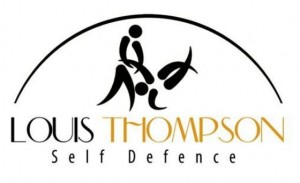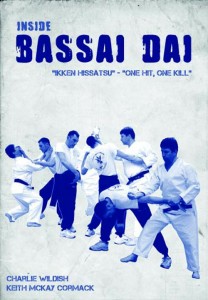This is an area that you will see debated from time to time with people for and against it. Some claim that pressure points make your techniques ultra effective, whilst others claim that in the heat of the moment you will not have the accuracy to find the point whilst somebody is trying to hit you at the same time.
So who’s right? Well in my humble opinion, the truth lies somewhere in the middle and it depends on the circumstances.
If you start a fight 6ft apart, close in, then exchanging blows with a capable opponent; I believe that it would be difficult (but not impossible) to find pressure point targets. Just think when you are sparring against somebody of equal skill, it can be difficult landing a blow on their torso (which is a large target), never mind finding a very small pressure point to hit. Furthermore, when you have just had an adrenalin dump, your fine motor skills do not work as efficiently. For this reason, many people advocate concentrating on developing your techniques (regardless of style) so that you are fast and powerful and you will hurt your opponent wherever you hit them.
On the other side of the coin though, very few fights start 6ft apart. They usually start much closer with the antagonist making impolite enquires as to who the fornication are you visually observing! Or something like that.
In this kind of scenario, if you are genuinely convinced that you are going to be attacked and you are not able talk sense into your assailant, at some point you may take the decision that you will have to beat some sense into him instead. I’m not talking about somebody calling you names or jumping a queue, but a real threat of imminent violence. In this scenario a pre-emptive strike to a pressure point will be much more likely to succeed. The opponent is still posturing, still psyching himself up; he’s not actually going for it yet. You don’t step back into a guard as that only warns him that you are a proficient martial artist and tips him off to attack you even more vigorously.
You are better off using what Geoff Thompson calls “the fence”, with hand open and facing down in a universal position of neutrality, feet apart in a solid stance (but not a martial arts stance), engaging his brain with some dialogue (anything at all - isn’t it a shame about the polar bears!), then hit him as fast and hard as you can on a vulnerable point.
Now some traditionalist may get a bit hung up on this, as Funikoshi (founder of Shotokan Karate) stated that in Karate their is no first attack. This has been interpreted by many as you need to stand there and wait for the other person to throw the first punch. This is obviously not very practical. What he really meant was that we should not go looking for a fight. In other places, Funikoshi has described how to deal with an assailant by showing no sign of fighting, using a pre-emptive strike then running away to get help.
And as I’ve heard Kevin O’Hagan say, “you don’t really want a fair fight do you”? After all, he started it not you.
There are of course other considerations. Firstly, if your assailant is drunk or high on drugs, they may not even feel very much as there senses are dulled, yet their aggression can be heightened.
Secondly, if your assailant is fully hyped up and adrenalized, they will feel less. Have you ever cracked you shin against somebody elses in sparring? You think “ouch”, give it a quick rub and carry on. But the next day, it is throbbing like mad.
Why did you not feel it very much in sparring? Its because you were fully warmed up and your adrenalin was flowing. However, if you (or you assailant) are squaring up for a real confrontation, you have an awful lot more adrenaline in your body than when you are sparring. You will absorb a lot more punishment without even thinking about it . . . . . and so will he! Kevin O’Hagan reports of a case in America where a guy attacked a cop with a knife. The cop shot the guy 4 times, yet the assailant still managed to get to the cop and stab him before collapsing. How well do you think your pressure point strikes would work against a knife wielding assailant who keeps going with 4 bullets in him.
Boxers have been known to break bones in their hand early in a fight, yet still finish the fight.
I witnessed an incident in a pub many years ago where a confrontation broke out between two lads. One obviously wanted to fight and the other one did not. Very quickly a friend of mine, Daren, intervened to calm it down. Now Daren is a very large, solidly built guy, who whilst having a very friendly disposition is not the type of guy you would want to get on the wrong side of.
As Daren tried to calm the aggressor down, he was met with a complete lack of reason or logic. Daren lost his temper and went for the lad. It took 3 of us to hold Daren back, swearing and snarling in complete animal rage, with his sister trying to talk him out of it. The lad who had started it all turned white. My friend Keith (who you can see elsewhere on this blog demonstrating bunkai with me) tried applying a pressure point to calm Daren down. Daren in his complete rage did not even seem to notice.
After a while Daren calmed down and the other lad made a hasty (and wise) exit. When Keith met Daren a few days later and asked him what all that had been about, Daren gave a cheeky smile and said, “6 months stress all out in a few minutes”.
Human beings are capable of taking an awful lot punishment when in a rage, adrenalised, or just plain determined enough to finish the job; so it does suggest that pressure points can be limited when against somebody in a rage or fully adrenalised.
That said, there are some points that no matter how drunk, high or adrenalized a person is; cannot be resisted. An attack to the airways so that they cannot breath will always work, be it a strike or a choke. However, much of a rage someone might be in, if they can’t breath, they can’t fight.
Attacking the carotid sinus (side of the neck where you feel the pulse), causes the blood pressure to the brain to drop and hence the assailant passes out. This can be done with strikes (especially knife hand) or strangles.
Also an upward blow to the chin or the side of the lower jaw line causes the brain to “bounce” against the back of skull, causing un-conciousness.
These points (and a few others) should normally work under any conditions, though you are more likely to succeed with a pre-emptive strike than in an all out fight.
Whilst I believe that pressure points are valuable and have there place, they should not be treated as a short cut, or as a replacement for perfecting your technique. Whilst most people recognise that technique may only be 50% efficient when under pressure, 50% of a good technique is still much better than 50% of a bad technique. If you are not able to get in a pre-emptive strike, you may find yourself having to simply hit your assailant as hard as you can, wherever you can, until a good target becomes available. By then however, you may be too adrenalised to spot the opening, because a side effect of adrenalin is that blood goes from your brain to your muscles, slowing up your thought process.
Even if you are lucky enough to get in a good pre-emptive strike, that strike will need to fast and hard, which brings us back to good technique.
Russell Stutely is recognised as Europe’s number one leading expert on pressure point fighting. I recall one of his newsletters where people had been writing in asking him why he spends so much time doing pressure points. However, his response was that he only does a small amount of training on pressure points, with most of his personal training being basics and power development. When you look at Russell’s franchise training program, he deals with balance points, power generation and other aspects before he starts on pressure points. So if Europe’s number one expert on pressure points does not take short cuts and neglect his basics, neither should we.
My own Sensei, Paul Mitchell, always emphasises that form should have function (not just look pretty); but function will not work well without good form.
This is only my opinion and I don’t claim to have gospel knowledge on the subject, but I hope it helps others to form their opinion.
 Pictured above is John Johnston being awarded his 7th Dan Shotokan Karate by Geoff Thompson and Dev Barrett at Dev Barrett’s Dojo in Coventry which is the hometown and birthplace of these 3 great men.
Pictured above is John Johnston being awarded his 7th Dan Shotokan Karate by Geoff Thompson and Dev Barrett at Dev Barrett’s Dojo in Coventry which is the hometown and birthplace of these 3 great men.






